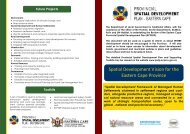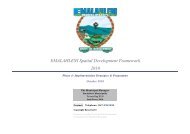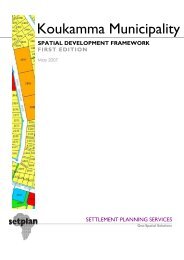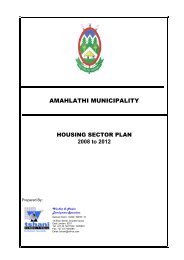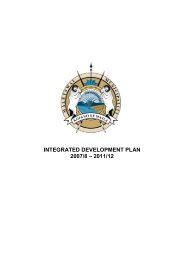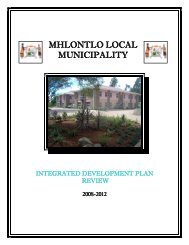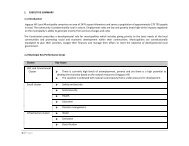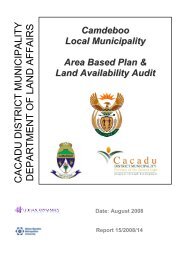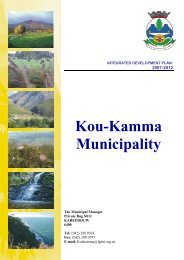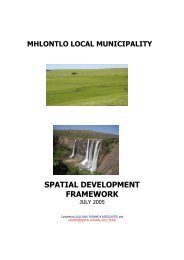intsika yethu local municipality - Provincial Spatial Development plan
intsika yethu local municipality - Provincial Spatial Development plan
intsika yethu local municipality - Provincial Spatial Development plan
Create successful ePaper yourself
Turn your PDF publications into a flip-book with our unique Google optimized e-Paper software.
(Part C) <strong>Spatial</strong> Orientation4. <strong>Spatial</strong> Analysis and RationaleThis section necessitates that, the strategies, policy and maps reflect spatial implication with regard toward investment in urban and rural setting. It is inherent therefore that, the principles of the National<strong>Spatial</strong> <strong>Development</strong> Planning (NSDP) and <strong>Provincial</strong> <strong>Spatial</strong> development Planning (PSDP) be applied toensure sustainable <strong>plan</strong>ning e.g. densification, mixed use as well as mitigation and adaption strategiesrelating to climate change.The <strong>Spatial</strong> <strong>Development</strong> Framework for IYLM is being reviewed and will be adopted by the Council in2012. This is in response to requirements of Section 26 (e ) of the Municipal Systems Act, 2000 (Act No 32of 2000), that requires every <strong>municipality</strong> to formulate a spatial development framework (SDF) as part ofthe contents of its IDP to provide basic guidelines for a land use management systems of the <strong>municipality</strong>.This further necessitates that, the spatial analysis must consider the broad economic sectors and keystructuring elements (nodes & corridors) since it is important that areas of need, potential (existing andlatent) and decline are shown spatially. The IYLM‘s Reviewed SDF: 2009/2010 illustrates futuredevelopment perspectives and desired growth, direction and pattern of spatial development and growth inthe <strong>municipality</strong>.There are two types of settlement patterns in IYLM, namely rural and urban, with urban centres inCofimvaba and Tsomo. These urban centres possess a relative level of urban sprawl. Within IYLM thereare approximately 213 rural settlements which are sparsely scattered all over the 21 wards within themunicipal area with the largest concentration pockets found along the main access routes.4.1 <strong>Spatial</strong> OverviewThere are several issues that relate to IYLM with regard to spatial development, the following are regardedas key issues:Dispersed settlements patterns and pockets of development at urban centres surrounded byscattered underdeveloped rural villages, which implies great costs to achieve access to basicservices and infrastructure;Need to systematically address the fragmented nature of development to promote the integrationof urban and rural areas over time (phased development approach which will optimise on existingcapacity and resources to generate the most spin-off effects from investment);Prioritisation of different levels of investment to ensure ongoing sustainable development andspin-off effects for continued economic growth in the IYLM area; andLimited economic activity outside of urban centres.There is a need to build on the agricultural and tourism potential of the area and target investment to otherLED related initiatives and programmes taking place outside of the urban centres that have potential forgrowth and to generate economic spin-off.46



